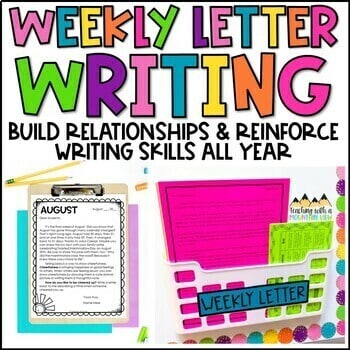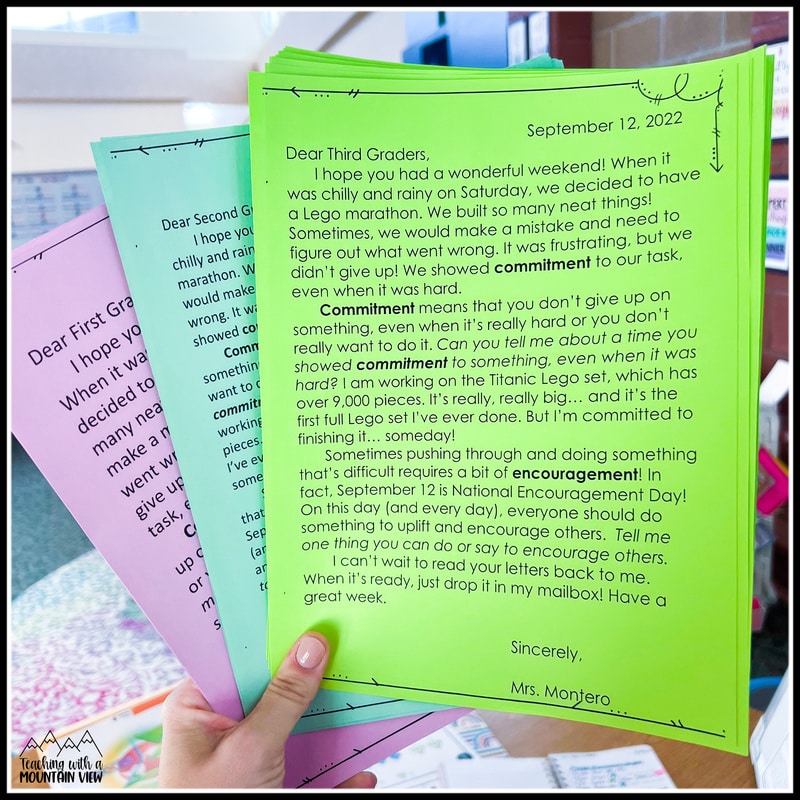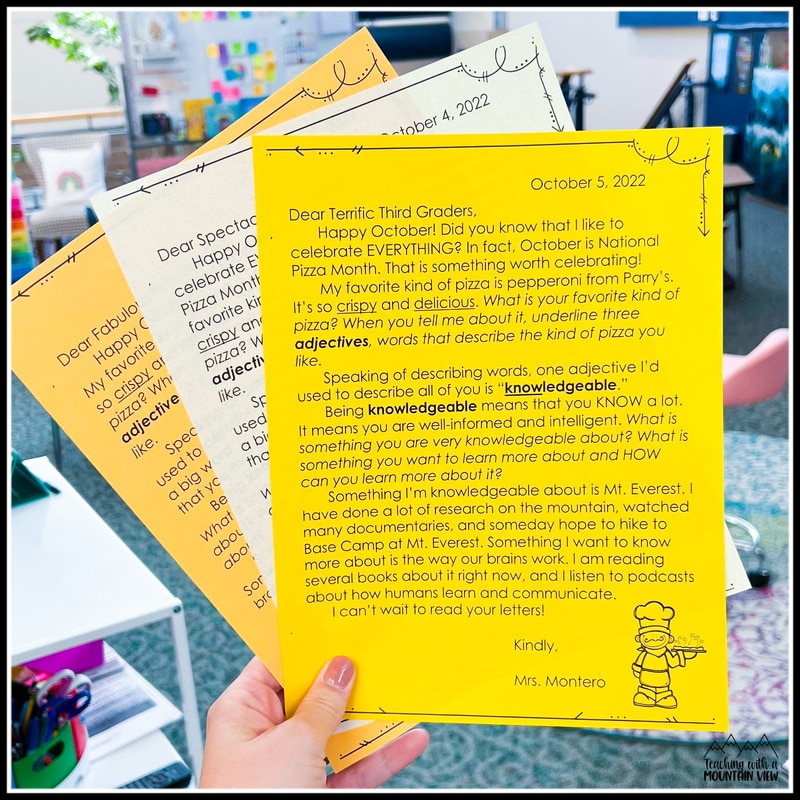- Literacy
- |
- Back to School
- |
- Building Community
- |
- Building Community
- |
- Classroom
- |
- Classroom Management
- |
- Homework
- |
- Seasonal
- |
- Writing
Weekly Letter Writing to Build Community
By Mary Montero
Share This Post:
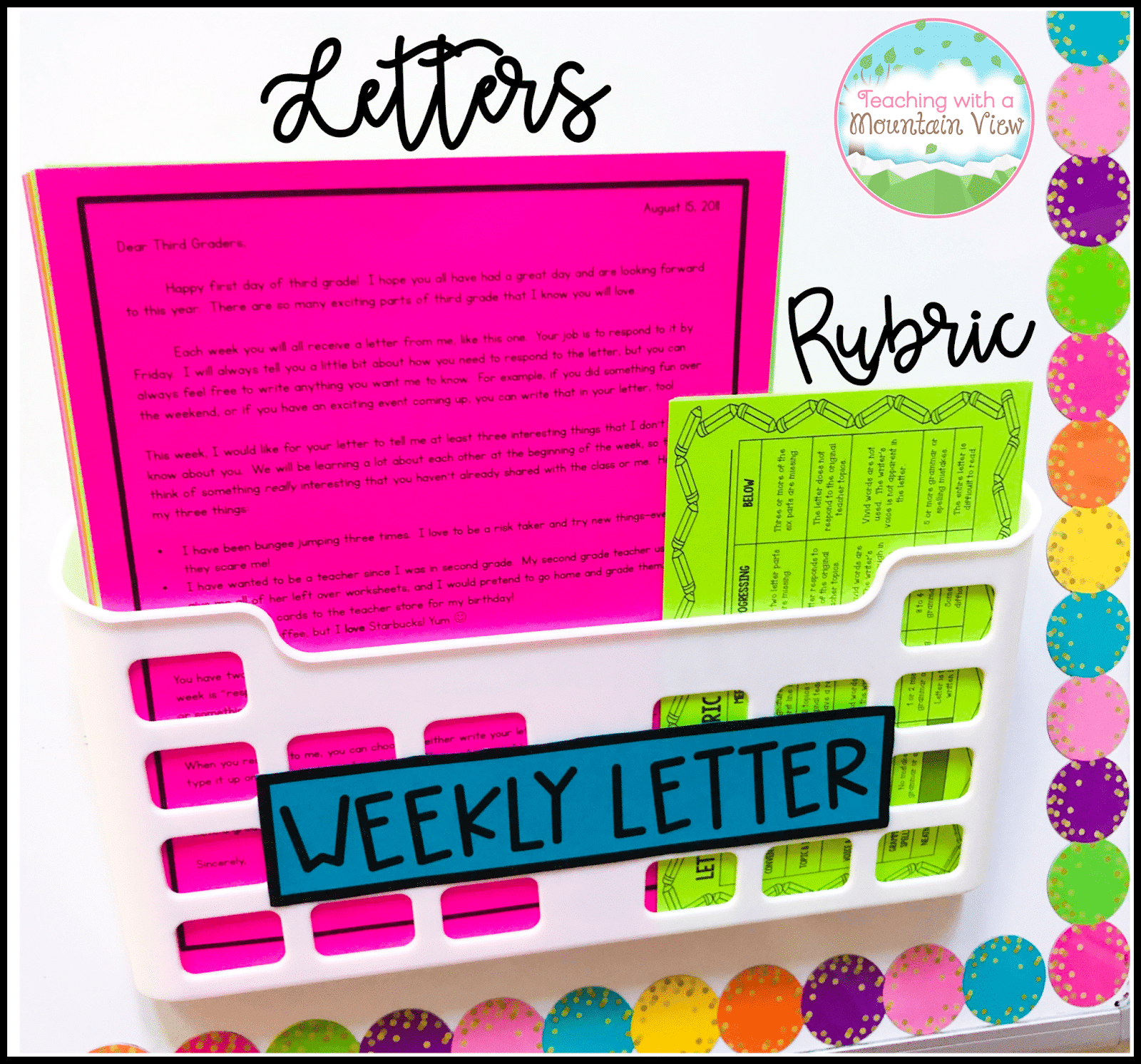
Years ago, I shared this idea as a free resource on TpT, but I’ve never gotten around to explaining my weekly letter writing procedures over here on my blog! It’s definitely time.

When I was student teaching, I had truly the best cooperating teacher I could have asked for. She was a phenomenal teacher (she’s now a principal), a master at building community in her classroom, and one of the kindest people I’ve ever met. I got so many wonderful ideas from her that year, and many of those ideas have become teaching traditions that still live on my classroom.
One of my favorite activities that I have implemented because of her is Weekly Letter Writing. The premise is simple: I write a letter to my students every week, and they write back. It’s the only homework I give (click here to read more about my homework policy), but it’s also one of the most important things I do in my classroom to build community. I’ve implemented this every year I’ve been in the classroom, and many of my colleagues have started doing it, too.
Weekly Letter Writing
Are you looking for an engaging and authentic way to build relationships in your upper elementary classroom AND practice important writing skills? Weekly Letter Writing is the only homework I use in my classroom, and it is one of the best things I have ever implemented in the classroom.
Why write letters each week?
First and foremost, the purpose behind writing letters is to build relationships and connect with my students. Every single week, I get to read a personalized note from my students, and they get to read one from me. I get to know them better, and they get to know me better, too.
Second, it’s an amazing way to have students practicing writing skills in a super fun and interesting way. I have watched kids blossom from two sentence letters at the beginning of the year to full-page letters by the end of the year. While they may not always be SUPER excited about the prospect of this (or any homework) at the beginning of the year, they always grow to love it.
Third, it’s an important opportunity to allow students to reflect on what is going on in our world and in our classroom. Since I write the letters each week (more about that below), I’m able to incorporate current events in the world as well as address certain things going on in our classroom.
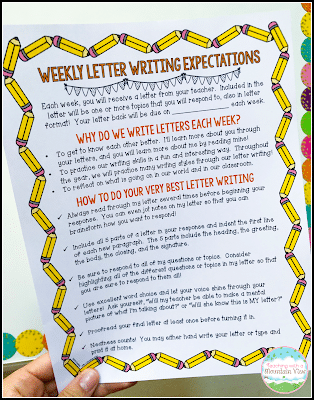
What do I write letters about?
So many different things!
I start every letter with one or two sentences about something fun going on in my life (I usually write them on Sunday evenings or Monday morning, so I do a quick recap of my weekend.) Then I decide on my “topic” for the week. When I worked in an International Baccalaureate (IB) School, I would focus on one IB attitude each week or on our central idea. If you’re working on a certain social studies topic, incorporate that into your letter. If you’re reading a book, think about how they can reflect on that book in their letter. Consider local, national, or worldwide events and discuss them. Look at seasonal topics. The possibilities for what to write about are truly endless.
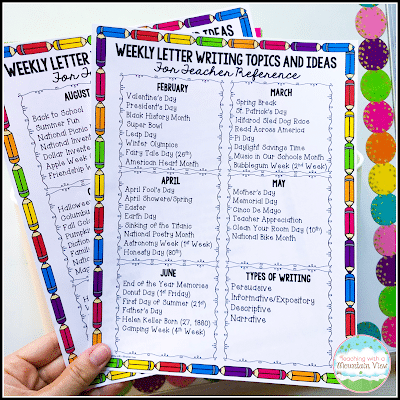
I usually model a response to my prompt within the letter I write. If I’m asking them to think about empathy, I’ll write about a time I showed empathy (or didn’t show empathy…). I always include a prompt in my letter (and bold it so that it’s clear what they need to write back about) that they should respond to, but students often add more details and tidbits about their lives.
I have to write to them every week? Doesn’t that take a lot of work?
First, the letters are pretty short. If I’m writing a new one, it usually only takes about 10 to 15 minutes to draft.
Second, I save my letters and do use similar prompts year after year. One grade level team I worked with that decided to implement this grade-wide came up with “templates” that we all used every year (based on our current topics) and then we just added in our own little notes, current events, etc. each week. This made sending them home every week a BREEZE!
If you want to use templates for your weekly letters, this Weekly Letter Writing resource includes an editable template for every single weekly letter. Just open, add a bit of personalization, and print. That’s it! It includes:
- Weekly Letters for each month of the school year – they’re all editable so you can personalize them with your own anecdotes and classroom content
- Student Responses – A letter template for students to respond to your letter
- Rubric to grade students’ responses
- A letter explaining the project to students/caregivers
Do I grade and respond to every letter?
Grade? No. Respond? Briefly.
I am not exaggerating when I say this is the one piece of work that I look forward to reading more than any other. Kids tend to really get into this– typing them out, adding borders, clip art, folding them into fun shapes, putting them into envelopes. They take great pride in their letters, so I really enjoy reading them.
I choose maybe one a month to use the rubric (included in the free resource below) on, but I don’t necessarily count it as a grade since it’s homework, and I don’t know what level of help they received on it.
I write short responses to letters. Sometimes it’s as simple as responding with a “WOW!!” in the margins where they’ve written something interesting, or a quick “Me too!” comment. Sometimes, I write one or two sentences back (on the letter they wrote me). My kids are always eager to read my responses when they get them back the following week.

How do I get started?
I usually start this during the very first week of school. Some years, I have introduced it on the first day of school. It depends what grade level you teach and how much pre-teaching of letter format you’re going to have to do. But you definitely want to start this as soon as possible.
I have created a letter writing starter kit so that you can easily get going with letters in your classroom! It includes an information sheet for students, letter topic ideas and examples, and a short rubric for grading them, if you so choose.
You can download the letter writing starter kit for free below.
Years ago, I wrote about this idea as a guest blogger on Laura Candler’s blog. Clear HERE to read the original blog post that includes a few different ideas!
Mary Montero
I’m so glad you are here. I’m a current gifted and talented teacher in a small town in Colorado, and I’ve been in education since 2009. My passion (other than my family and cookies) is for making teachers’ lives easier and classrooms more engaging.







